Harness the Power of Extended Events in SQL Server for Unparalleled Performance Monitoring and Troubleshooting
The phrase “Extended Events” resonates with unprecedented effectiveness in the dynamic world of SQL Server performance monitoring and troubleshooting. Database experts now have access to a powerful toolbox that will help them better understand SQL Server operations, identify bottlenecks, and optimize performance.
Table of Contents
Introduction
Staying ahead requires creative technologies in the fast-paced world of database administration. In SQL Server performance monitoring and troubleshooting, “Extended Events” are a game-changer. This article provides an in-depth examination of Extended Events’ design, advantages, disadvantages, and useful applications.
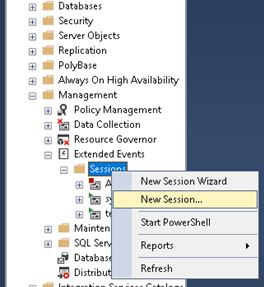
Extended Events in SQL Server have introduced a paradigm change in database monitoring. In contrast to SQL Trace, Extended Events adds lightweight, customizable event capture. This level of detail helps database managers concentrate on important events, reducing overhead and offering a thorough perspective of database processes.
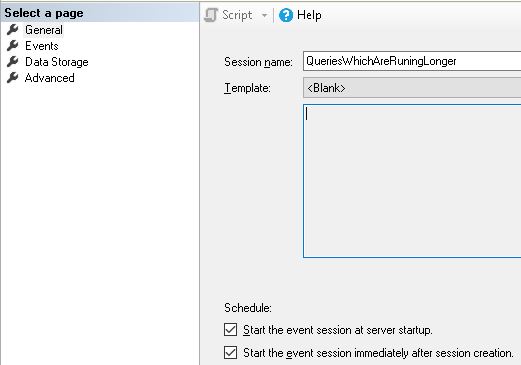
If you want to know the “Top 10 best practices for SQL developers to boost query performance“, read this article.
What are Extended Events in SQL Server?
SQL Server Extended Events is a simple and effective event-handling mechanism at its heart. It offers an unparalleled look at the database’s inner workings since it collects a multitude of information on server activity.
The Advantages of Extended Events in SQL Server
The advantages of Extended Events are given below:
Minimal Performance Overhead
Extended Events are made to have a modest impact and allow continuous monitoring without materially compromising the SQL Server instance’s performance.
Customizable Event Capturing
Customizable event capturing gives you the freedom to record only the events and data columns necessary for monitoring and troubleshooting. This focused approach reduces noise and highlights important information.
Rich Data Collection
Extended Events offers a wide range of data columns that give an in-depth understanding of SQL Server’s internal operations. This comprehensive information is essential for detecting complicated performance problems.
Real-time Monitoring
Extended Events feature real-time event capture, allowing you to keep track of events as they happen and take appropriate action. This function is very helpful for quickly locating and fixing performance bottlenecks.
Lightweight Design
Extended Events’ architecture is made to gather, store, and retrieve data efficiently. Due to its lightweight design, the monitoring procedure itself won’t strain the system.
Integration with Transact-SQL
T-SQL scripts may be used to manage and set up Extended Events, giving database experts a strong and familiar working environment.
Diagnose Difficult-to-Replicate Issues
Extended Events’ fine-grained event-capturing capabilities allow us to identify and troubleshoot problems that are challenging to reproduce in controlled situations.
Check this article also: Deadlocks in SQL Server: Understanding and Resolving Database Concurrency Issues
The Disadvantages of Extended Events in SQL Server
The disadvantages of Extended Events are given below:
Learning Curve
Compared to certain other monitoring and profiling tools in SQL Server, Extended Events has a higher learning curve. Users may take some time to grasp the principles and intricacies of event sessions, targets, and configuration choices.
Limited GUI Tools
Although SQL Server Management Studio (SSMS) offers a graphical user interface for Extended Events, some complex settings and adjustments could need scripting T-SQL scripts. Users who choose a purely GUI-based strategy may find this challenging.
Limited Third-Party Tool Support
Even though Extended Events has powerful features, not all third-party monitoring and profiling tools have full integration support for Extended Events. This may impact users who depend on particular third-party products for their monitoring requirements.
Older Version Compatibility
Even though Extended Events have been available since SQL Server 2008, some businesses could still be utilizing earlier SQL Server versions that do not support Extended Events. This may restrict the use of this function in some settings.
Complex Configuration
Although the customization options are helpful, configuring Extended Events for certain circumstances might be challenging for less experienced database administrators.
Limited Historical Data
Extended Events data is usually stored in memory or saved to files or the ring buffer as appropriate. This indicates that careful planning and consideration of data preservation solutions may be necessary for the historical study of occurrences over long periods.
Check this Article also: Unveiling the Power of DBCC FREEPROCCACHE: A Comprehensive Guide.
The Architecture of Extended Events in SQL Server
The structure of SQL Server’s Extended Events architecture creates a foundation that makes event recording, processing, and analysis effective and flexible. It comprises several important parts that combine to offer a thorough understanding of the behavior of the SQL Server instance. Let’s examine the Extended Events architecture:
Event Sessions
The core component of Extended Events is the event session. It represents a conceptual container that specifies what events should be recorded, how they should be processed, and where the recorded data should be kept. Event sessions can be set up to record particular events, such as requests, failures, or deadlocks.
Events and Event Providers
Events are certain occurrences or activities you want to record within the SQL Server instance. Each event has a provider or source that is a source of events. Several event sources offered by SQL Server address various facets of the database engine, including query execution, transactions, failures, and more.
Targets
Targets specify where the recorded event data will be saved. Files, ring buffers, and event counters are just a few of the target types that Extended Events support. Depending on your needs for monitoring and analysis, you may select the best target. For instance, you might use a ring buffer for real-time monitoring or a file destination to save data for later analysis.
Actions and Predicates
Actions are extra details connected to an event that might offer context or further information about the event. Predicates are requirements that must be satisfied for an event to be recorded. You may modify the recorded information for each event and eliminate unnecessary information by using actions and predicates.
Packages and Templates
To simplify establishing event sessions, packages are pre-defined collections of events and configuration variables. Reusable settings known as templates may be used to generate event sessions quickly. They offer a practical method to set up event capture for frequent occurrences.
Global Fields and Actions
Global fields and actions are data that are automatically added to each event in a session of events. These can include specifics about the session, the event’s timestamp, and other system-related information. Thanks to global fields, the collected events have context.
Event Queues and Buffers
Event queues temporarily store collected events before processing and writing to targets. They control the flow of events between the event session and the targets and guarantee that events are handled effectively and sent to the intended recipients.
Schedulers and Workers
Workers are in charge of processing and managing events, whereas schedulers oversee task execution connected to events. The design uses many schedulers and workers to handle event capture and processing effectively.

Why are Extended Events necessary for SQL Server?
A key component of SQL Server for tracking and debugging SQL Server instance performance is Extended Events. Requirements for extended events are given:
Reason 1. Compact & Lightweight Performance Tracking:
Because Extended Events is meant to be a low-maintenance monitoring solution, it won’t adversely affect server performance while you gather comprehensive event data.
Reason 2. Adaptable and Expandable:
Within SQL Server, Extended Events provide an extremely adaptable framework for tracking a variety of events.
Reason 3. Precise Event Monitoring:
Extended Events allow precise tracking at an extremely fine level. They also record events about SQL Server internals that are hidden from view by other monitoring tools, like SQL Profiler.
Reason 4. Enhanced Targeting and Filtering:
With the powerful filtering features that Extended Events offers, you may collect only the most essential information.
Reason 5. Combination with Additional Instruments:
It is good that Extended Events integrate with other SQL Server tools, such as Dynamic Management Views (DMVs) and SQL Server Management Studio (SSMS).
Reason 6. Monitoring in Real Time:
Real-time monitoring is crucial for identifying problems as they arise and taking appropriate action, and Extended Events facilitate this process.
Reason 7. An alternative to SQL Profiler
Microsoft has positioned Extended Events as SQL Profiler’s potential successor with its release.
Reason 8. Personalized Event Meetings:
Custom event sessions can be made to target particular operational needs or performance issues, giving you specialized insights into your SQL Server system.
Reason 9. Assistance with Various Event Sources:
SQL Server, the operating system, and even application-specific events are just a few of the data sources that Extended Events can capture.
Reason 10. Examining the Past:
By storing extended events data, you can use historical analysis to find patterns, reoccurring problems, or the effects of changes over time.
Steps to implement extended events to track deadlocks
Creating an Extended Events session to gather data about deadlock occurrences is necessary when using Extended Events to track deadlocks in SQL Server. To arrange for one of these sessions, adhere to these detailed instructions:
Step 1: Open SSMS
Open SSMS & connect the server where we need to apply Extended Events to track deadlocks.
Step 2: Launch Extended Events
Open the “Object Explorer” in SSMS and click on the “Management” node. To start a new Extended Events session, right-click on “Session” and choose “New Session…”
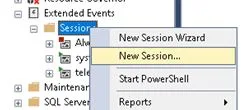
Step 3: Session details need to provide
Name of session: Give your Extended Events session a meaningful name, like “TrackDeadlocks.”
Select Global Fields: Choose the fields you wish to have in the session, such as “integer data,” “text,” and “timestamp.”
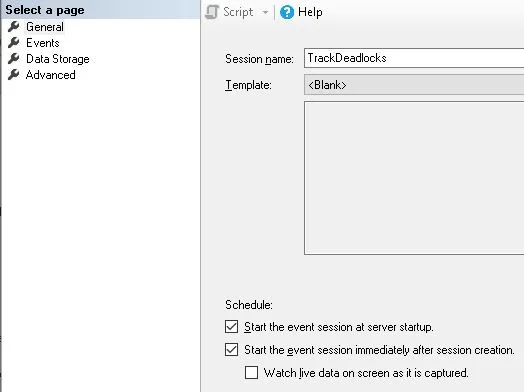
Step 4: Include Events
To select the events you wish to record, click the “Events” tab. To record XML-formatted deadlock information in this instance, choose the “xml_deadlock_report” event.
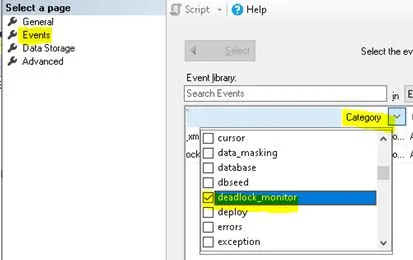
Step 5: Apply the filters
Set filters to record particular details about deadlocks under the “Filter Fields” section after selecting the “Event Fields” tab.
You can configure filters, for instance, to catch deadlocks involving specific objects, databases, or durations.
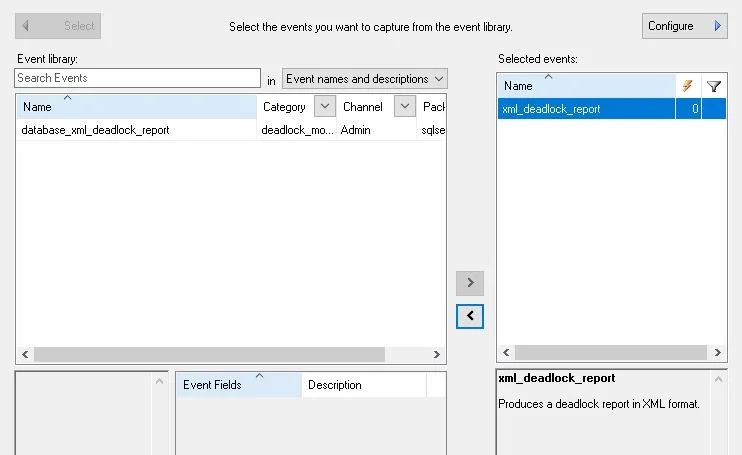
Step 6: Storage Configuration
Select the “Data Storage” tab to specify the location for the Extended Events data storage. You can select the proper file target or set it up to use a ring buffer to hold data.
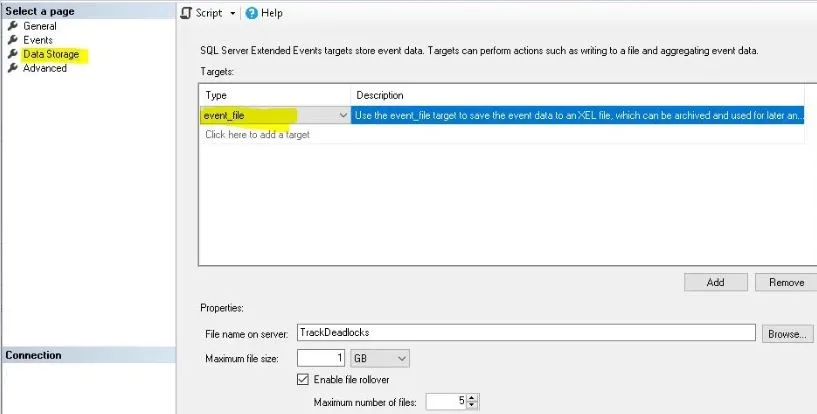
Step 7: Define session actions.
Select the “Session” tab and designate what should happen when the session begins and ends. When it comes to deadlocks, you have two options: email notifications or data saving to a file.
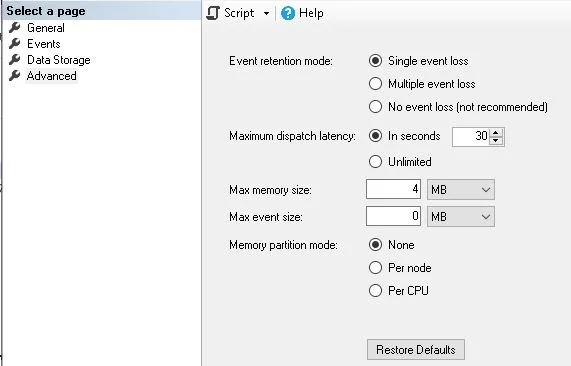
Step 8: Begin the Meeting
Once set up, right-click on your Extended Events session in SSMS to start recording deadlock details, then select “Start Session” from the menu.
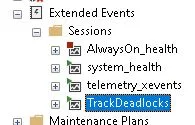
Step 9: Keep an eye out for deadlocks
Continue the Extended Events session and examine the events recorded regularly to look for instances of deadlock. You can use SQL Server Profiler or T-SQL queries to examine the gathered data.
Step 10: Stop and Adjust the Session
If necessary, you can halt the Extended Events session to make changes. To end the session, right-click on it and choose “Stop Session.” After making the changes, restart the session.
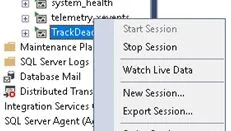
A Few Examples of Extended Events
Query to fetch all Sessions of Extended Events
Using the below query, we can fetch all Sessions of Extended Events
SELECT name, * FROM sys.server_event_sessions;Query to list all available events and actions
SELECT * FROM sys.dm_xe_objects
WHERE object_type = 'event' OR object_type = 'action';Query to fetch active sessions of extended events
SELECT * FROM sys.server_event_sessions
WHERE startup_State = 1Query to start & stop the Extended Event Sessions in SQL Server
ALTER EVENT SESSION <SessionName> ON SERVER STATE = START;
OR
ALTER EVENT SESSION <SessionName> ON SERVER STATE = STOP;
Query to modify and delete Extended Event Sessions in SQL Server
ALTER EVENT SESSION <SessionName> ON SERVER STATE = MODIFY;
DROP EVENT SESSION <SessionName> ON SERVER;
Conclusion
Extended Events stand out as a beacon of effectiveness in SQL Server performance. They reinvent database monitoring and optimization by balancing low overhead with maximum insights. Extended Events provide administrators with the tools to overcome performance barriers and improve their database administration skills. These tools may address issues like long-running queries and TempDb leaks.
FAQs
Q: Do all editions support Extended Events In SQL Server?
Ans: From Standard through Enterprise versions of SQL Server, Extended Events are available.
Q: Can I modify event sessions to track particular problems?
Ans: Definitely. With its high degree of customization, Extended Events lets you focus on certain events of interest.
Q: How can I begin using Extended Events In SQL Server?
Ans: Examine the GUI tools in SQL Server Management Studio to define your event sessions.
Q: When it comes to real-time monitoring, are Extended Events appropriate?
Ans: Extended Events excel at real-time monitoring, making it possible to identify performance issues quickly.
Q: Which sites can I use to learn more about Extended Events?
Ans: Just refer to Extended Events In SQL Server to learn & apply in your environment.
Q. What are Extended Events in SQL Server?
Ans: Extended Events is a lightweight, high-performance event-handling system in SQL Server used for capturing and analyzing diagnostic information about the database engine.
Q. How do Extended Events differ from SQL Server Profiler?
Ans: Extended Events are lightweight and lower overhead than SQL Server Profiler. They provide a more scalable and flexible approach to capturing events.
Q. Can I use Extended Events to capture specific events only?
Ans: You can configure Extended Events to capture specific events or groups of events, allowing for fine-grained control over what information is collected.
Q. What effect does enabling Extended Events have on the performance of SQL Server?
Ans: In response, Extended Events lightweight architecture has little effect on performance. They are made to offer insightful information with little overhead.
Q. Can older SQL Server versions be used with Extended Events?
Ans: In response, Extended Events are compatible with SQL Server 2008 and later versions since they were first introduced in SQL Server 2008. Certain features, though, might change between versions.
Q. In Extended Events, how do I make a custom event session?
Ans: Using T-SQL or SQL Server Management Studio (SSMS), you can configure the session properties, define the events you want to capture and specify predicates and actions to create a custom event session.
Q. Is filtering events in Extended Events according to particular criteria possible?
Ans: Extended Events supports the use of predicates, so you can filter events according to particular parameters like duration, database name, or other pertinent factors.
Q. What kinds of targets are available for storing data related to Extended Events?
Ans: To answer your question, Extended Events supports several targets: files, ring buffers, event logs, and the event pairing target. You can select the right target depending on your monitoring and analysis needs.
Q. How can I examine the information that Extended Events has gathered?
Ans: You can query and analyze the data from Extended Events using programs like SQL Server Management Studio (SSMS) or custom scripts. There are views and functions to get event data.
Q. Does using Extended Events raise any security concerns?
Ans: To ensure users have access to Extended Events, ensure they have the appropriate permissions. Additionally, exercise caution when capturing information, particularly when handling sensitive data.
See Also
DBCC CHECKTABLE: An In-Depth Analysis
DBCC Freeproccache in SQL Server: A powerful command
Understand Deadlocks in SQL Server
Unleash Database Insights with Extended Events in SQL Server

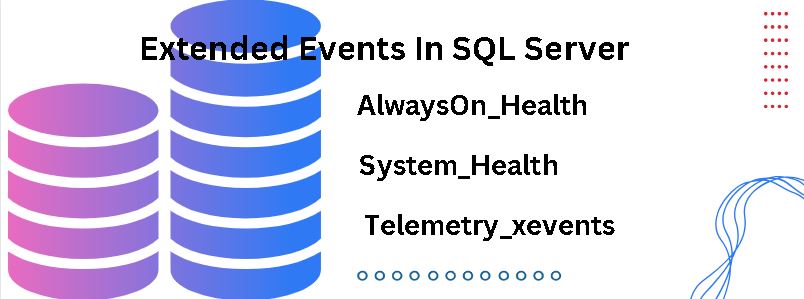
It’s awesome to pay a visit this web site and reading the articles/views of all colleagues regarding
this post, while I am also zealous of getting know-how.
I don’t even know how I ended up here, but I thought this post was great.
I don’t know who you are but definitely you’re going to a famous blogger if you
aren’t already 😉 Cheers!
Hey there,
You’ve done a great job. I will definitely digg it and personally suggest to my friends.
I’m sure they’ll be benefited from this website.
Thanks
Cedric Verco
Seriously, the articles are easy to read and understand.
It is my first time visiting your website page, which is beneficial.
I was surprised by your research to make this post unforgettable.
Magnificent task! Keep it up.
Every weekend I used to pay a visit this site, because I want learn more about the MS SQL Server.This website really conations good & informative material.
Miran Daremley